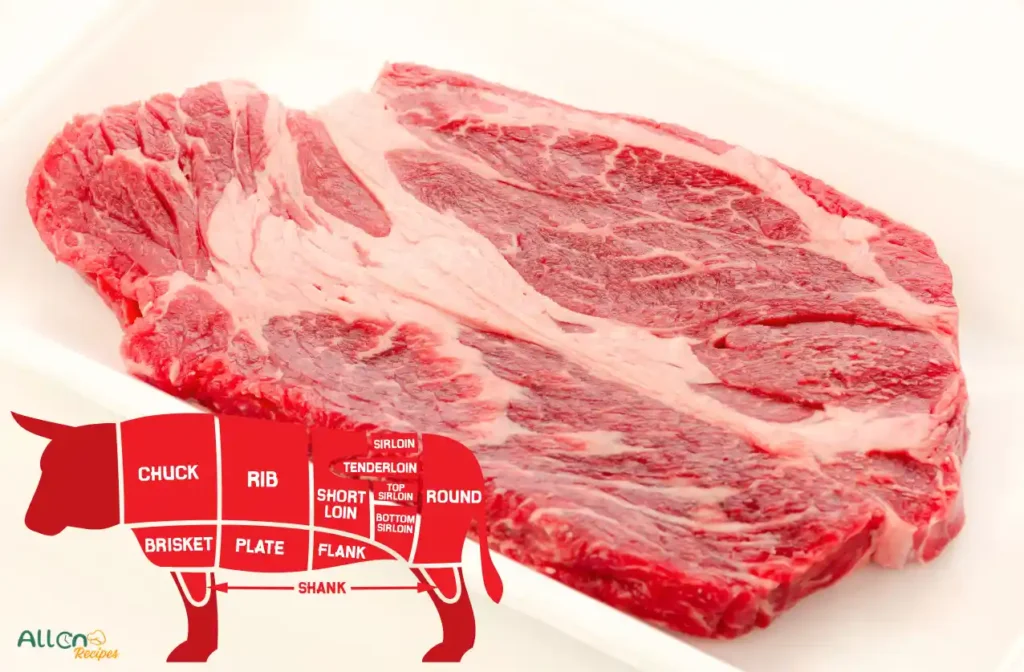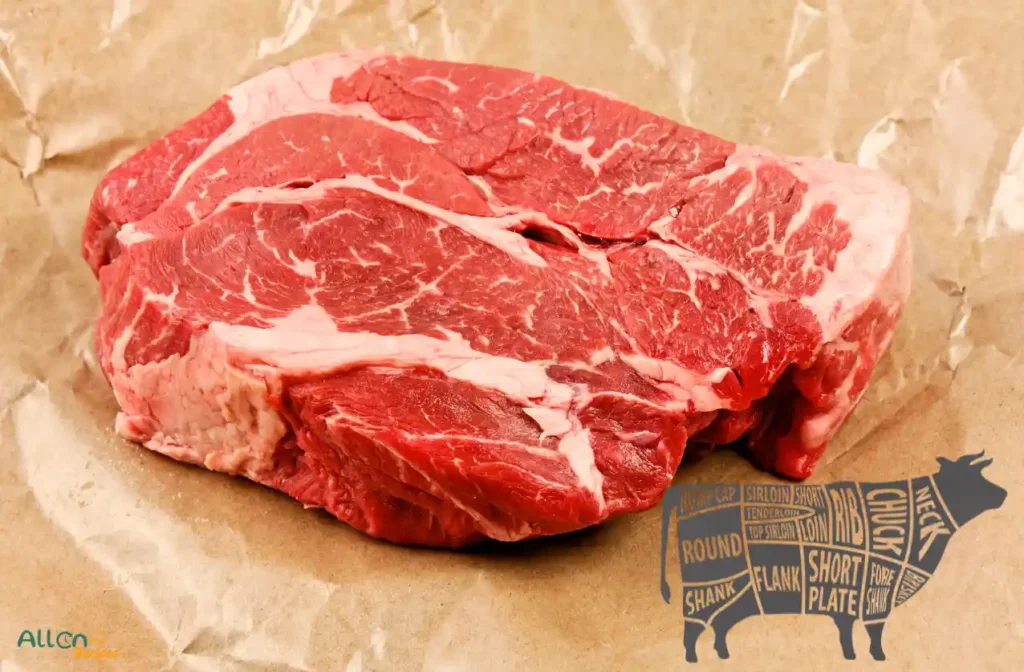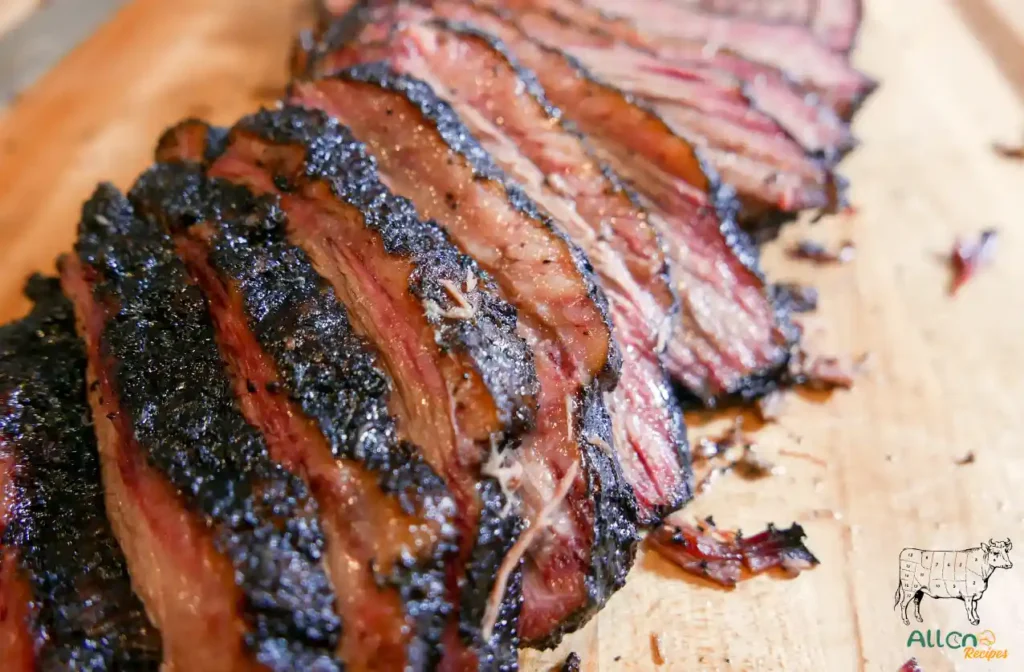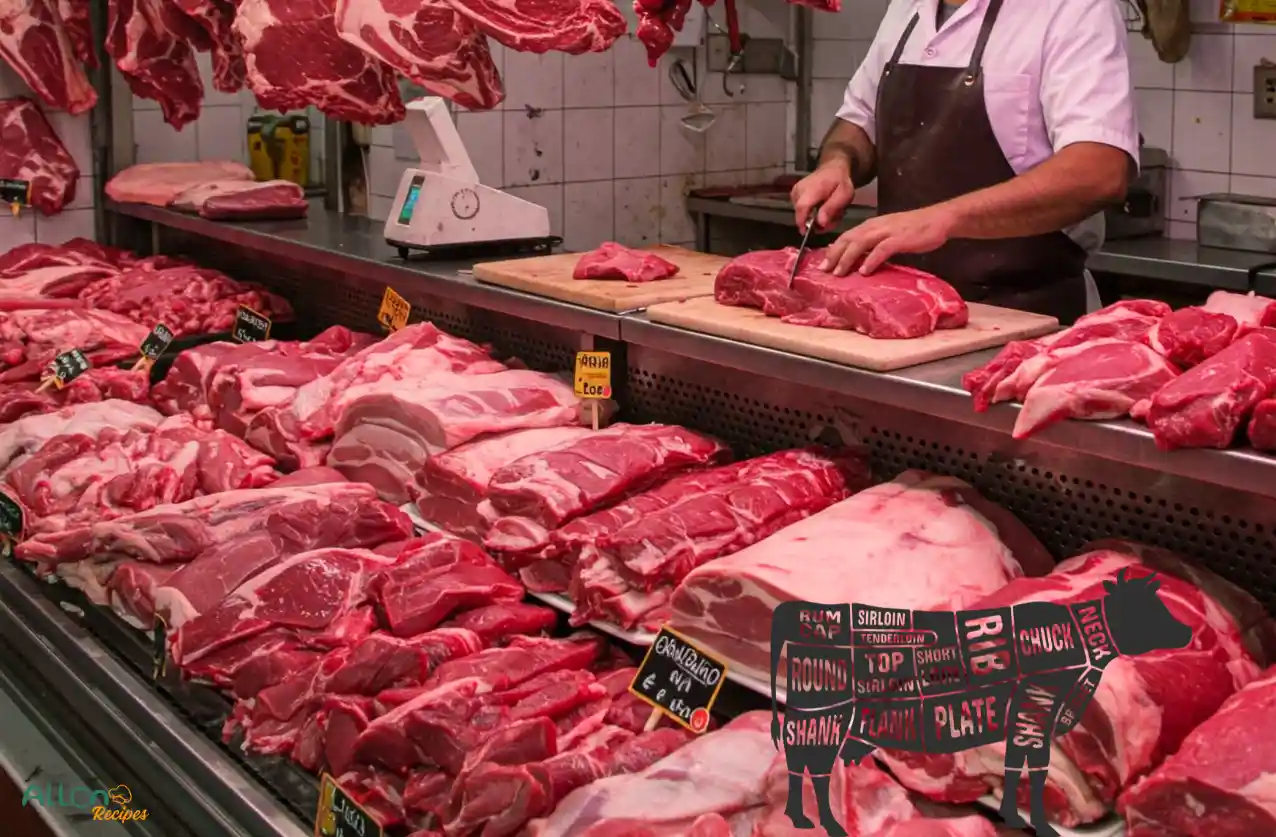Let’s be honest, “chuck delmonico steak” sounds like something your butcher made up to move meat. But the truth? It’s one of the most overlooked gems in the beef world. And if you know how to cook it right, it can rival steaks twice the price, ribeye included.
I’m Alfredo Marquez. I’ve grilled my way through just about every cut of beef you can name. And the first time I nailed the crust on a chuck delmonico? That buttery sear, the marbled richness, the moment the knife glided through like warm butter, I had to sit down. Not because I was tired. Because I was converted.
But here’s the important part that many people don’t understand: this steak is not just about taste. It’s about being careful, practicing, and noticing the small differences in the amount of fat and tough parts in the meat that can change how good it is to eat. It lives right on the edge of ribeye territory, literally and figuratively.
In this guide, we’re not just going to talk about what a chuck delmonico steak is. We’ll trace its murky roots, dissect the anatomy, and dive into the science of how to turn this “poor man’s ribeye” into your house specialty. From optimal doneness temps to side-by-side flavor battles, this is steak nerdery at its finest, with no fluff, no fluffers, and no fake mystique.
Ready to give the chuck delmonico the respect it deserves?
What Is a Chuck Delmonico Steak, Really?
First, a confession: even among butchers, the term “chuck delmonico” is kind of a mess. It sounds like a formal cut, but in reality, it’s a local dialect. A flavorful street name for a steak with no fixed address.
Let’s break it down, anatomically and historically.
A Name With No Identity
The name Delmonico comes from Delmonico’s, a 19th-century Manhattan restaurant that became legendary for its opulent, multi-course dinners. They served a steak that diners came to know as “the Delmonico.” But, here’s the catch, no one really agreed on what cut it was. Some say it was a ribeye, others a bone-in strip, still others claim it was from the chuck roll. That ambiguity stuck.
Fast forward to today: walk into five butcher shops, and you’ll find five different “Delmonico” steaks. But if it’s from the chuck, it’s almost always the chuck-eye, specifically, the first few cuts off the chuck primal, just next to the ribeye.
Chuck-Eye: The Poor Man’s Ribeye
This is where things get exciting. The chuck-eye (NAMP 1114D) is located right at the transition point from the rib primal into the chuck. Think of it as the ribeye’s less glamorous sibling, same marbling DNA, similar cap muscle, but slightly more connective tissue and a bit more chew.
That small difference? It scares people off. But cooked right, it delivers the same flavor punch with a bit more character. And here’s the kicker: it usually costs 40–60% less than a standard ribeye.
Where the Cut Lives
If you’re visual: the chuck primal begins at the 5th rib, while ribeye starts around the 6th or 7th. The “eye” in chuck-eye refers to the central, tender core muscle, the longissimus dorsi, which continues seamlessly into the ribeye. That’s why a well-cut chuck delmonico can look eerily similar to a ribeye, complete with marbling and that swoon-worthy spinalis cap.
But it’s not just lookalike meat. It cooks differently. behaves differently. deserves its own protocol, which we’ll get to.
Is a Chuck Delmonico the Same as a Ribeye?
Q: Are chuck delmonico steaks the same as ribeyes, or is that just marketing fluff?
A: Not quite the same. Chuck delmonico steaks come from the chuck primal, usually the chuck-eye, which sits next to the rib section. While they share similar marbling and flavor, chuck delmonicos have more connective tissue and can be slightly tougher if overcooked. They’re often called the “poor man’s ribeye” for a reason: close in flavor, easier on the wallet, but with their own identity.
Butcher to Consumer: What to Ask For, What to Pay

Here’s the deal, if you walk into a butcher shop and just ask for a “Delmonico,” you might end up with anything from a boneless ribeye to a shoulder steak that chews like rubber. The key is knowing how to talk the talk.
Know the Cut Code
If your butcher uses standard meat codes (NAMP), ask for NAMP 1114D, that’s the chuck-eye steak. It’s the portion of the chuck roll that sits directly next to the ribeye and shares many of the same muscle groups. That’s your “chuck delmonico.”
No NAMP code? Then get specific. Ask for:
- Chuck-eye steak (not just “chuck steak”)
- The first 2–3 cuts off the chuck, closest to the rib
- Boneless, ideally about 1 to 1.25 inches thick
- Look for marbling similar to a ribeye
You’re not trying to be difficult; you’re trying to save money and get that ribeye experience.
Watch for Impostors
Supermarkets often slap the “Delmonico” label on whatever they feel like, shoulder center, chuck center, even top blade. Some of those cuts are fine grilled; others belong in the slow cooker. If you see a “Delmonico” steak for under $6/lb and it looks flat, tight-grained, and lean? Pass. That’s not the real deal.
True Chuck Delmonicos should:
- Have visible fat marbling throughout
- Be cut thick enough to sear properly
- Include the longissimus dorsi (eye muscle)
- Show a bit of cap muscle (spinalis)
What It Should Cost
Depending on your region, you can expect to pay:
- $5–$8/lb at local butchers
- $7–$10/lb at premium supermarkets or online
- $3–$4/lb on sale at club stores (Sam’s, Costco)
Compared to ribeye’s $14–$22/lb price tag? That’s a serious win.
One trick I love: ask your butcher when they break down rib primals. That’s when chuck-eyes are fresh and easiest to get. Some shops only have them once a week.
How Do I Know I’m Getting the Right Cut?
Q: Is there a way to visually identify a real chuck delmonico at the butcher shop?
A: Yes. Look for a thick steak (at least 1 inch), with heavy internal marbling and a central “eye” of meat that looks almost identical to ribeye. If it’s thin, lean, or looks like it came from the shoulder center, it’s probably mislabeled. Don’t be afraid to ask the butcher which primal it came from, if it’s not near the 5th rib, it’s not the real thing.
Cooking Science Deep Dive: Temps, Searing & Alfredo’s Methodology
Here’s the raw truth: a chuck delmonico doesn’t forgive sloppy technique. You’ve got to treat it with the same care as a $30 ribeye, maybe more. But if you respect its structure and use a little science, it’ll return the favor with a rich, juicy bite and a crust that sings.
Let’s walk through it, from thermal logic to real-world techniques.
The Muscle Behavior: Why It Matters
Chuck delmonico steaks contain parts of the longissimus dorsi (ribeye core) and, if you’re lucky, some of the spinalis dorsi (rib cap). These are high-value, flavor-packed muscles, but unlike a ribeye, they’re sitting closer to the shoulder, which means more connective tissue.
That’s where precise heat control comes in.
You’re not just cooking a steak, you’re negotiating with collagen.
Step 1: Doneness Targets by Internal Temp
Forget the thumb-palm test. If you’re cooking without a thermometer, you’re gambling. Use these internal temps for precision:
- Rare: 120–125°F
- Medium-Rare: 128–132°F (sweet spot)
- Medium: 135–140°F
- Medium-Well: 145–150°F (not recommended here)
- Well-Done: 155°F+ (save this for burgers)
Chuck delmonico performs best at medium-rare, it’s the Goldilocks zone for tenderness and fat rendering. Go higher, and connective tissue tightens. Go lower, and you miss that luscious mouthfeel.
Step 2: Alfredo’s Reverse-Sear Method
Here’s the method I use, especially when I want that perfect edge-to-edge pink and a crust that snaps:
- Salt it early. 45 minutes minimum, 24 hours ideal. Let that salt penetrate.
- Low & slow pre-cook.
- Oven: 250°F until internal temp hits ~115°F
- Sous-vide: 129°F for 1.5–2 hrs
- Rest. Pull from heat, rest 10 min, uncovered.
- Blast sear. Cast-iron, grill, or torch, 1 minute per side. Internal should rise ~10°F.
- Butter finish (optional). Garlic-thyme butter bath in the final sear? Yes, please.
This method minimizes overcooking, maximizes crust, and keeps all that marbled magic intact.
Bonus: Tools Alfredo Swears By
- Thermapen or Meater thermometer
- Cast-iron pan (preheated until it smokes)
- Infrared temp gun (for pan temp control, 450–500°F ideal)
- Wire rack + sheet pan (for dry brining and oven phase)
H3: FAQ, Can I Just Grill It Like a Normal Steak?
Q: Can I skip the reverse-sear and just throw a chuck delmonico on the grill?
A: Technically, yes, but you’re taking a risk. Direct grilling works if your steak is under 1″ thick and you nail the timing. For thicker cuts (1.25″+), reverse-searing gives you way more control over doneness and texture. Plus, you avoid the gray band, that overcooked layer just beneath the surface. If you insist on grilling straight through, use two zones: sear over direct heat, then finish on the cooler side.
Flavor & Performance Lab: Why Chuck Delmonico Punches Above Its Price

Flavor isn’t just a matter of fat, it’s a dance between marbling, muscle fiber, sear chemistry, and what I call “resistance feedback” (how the steak fights your knife, then gives in). And this is where the chuck delmonico surprises people, especially if they’ve only known it by its supermarket name: chuck-eye.
The Marbling Mystery
At a glance, a well-cut chuck delmonico could pass for ribeye. It’s got the eye muscle (longissimus dorsi), the fat threading through it, and sometimes even a kiss of the prized rib cap (spinalis). What’s different?
- Fat distribution: Chuck delmonico often has coarser, more “webby” marbling. That gives it a slightly more rustic mouthfeel, not worse, just different.
- Connective tissue: You’ll get more chew. Not “tough,” but assertive. The kind of bite that reminds you you’re eating real beef, not something overly refined.
Taste Test: Chuck Delmonico vs Ribeye
Setup:
I cooked two steaks side by side: one ribeye, one chuck delmonico. Both were 1.25″ thick, salted 24 hrs in advance, reverse-seared with a garlic-thyme butter finish. Medium-rare. Rested properly.
Results:
- Chuck Delmonico:
- Flavor: Deep, almost stew-like richness. Slightly more savory than sweet.
- Texture: More structure, slightly less tenderness at the center.
- Crust: Fantastic. The extra surface texture grabs the sear beautifully.
- Ribeye:
- Flavor: More buttery, with that classic rib fat sweetness.
- Texture: Softer and more delicate in the chew.
- Crust: Smoother, but less gripping.
Verdict:
The chuck delmonico didn’t just hold its own, it brought something different. A kind of primal depth, the kind of steak that makes you want to sip red wine and stare at fire.
The Value Curve
Let’s talk dollars. A ribeye can run you $16–22/lb. A chuck delmonico? Often $6–9/lb. That’s more than 50% cheaper, and if you know how to handle it, you lose maybe 15% of the experience.
For a Tuesday night dinner, a weekend cookout, or any time you’re feeding more than two mouths? Chuck delmonico wins on the curve. It’s flavor-forward, cost-conscious, and performs like a steak in a higher league.
Why Don’t More People Know About This Cut?
Q: If chuck delmonico is so good, why isn’t it more famous?
A: Two reasons: marketing and fear. It’s got “chuck” in the name, which people associate with roasts or stew meat. And it’s not always easy to find, butchers often keep it for regulars or blend it into ground beef. Plus, without proper cooking, it can be chewy. It rewards technique, not shortcuts.
Recipes & Variations: How Chuck Delmonico Handles the Heat

Here’s something I’ve learned over years of experimenting with cuts like this: the chuck delmonico doesn’t demand a fancy technique, it demands respect. It’s like that strong, heavy frying pan you got from someone in your family: it might not look perfect, and people might not always know how to use it, but it can create great meals if you take care of it.
Below are a few of my go-to methods, each with its own strengths. No fluff. No food snobbery. Just options, depending on your tools, time, and how nerdy you want to get about it.
When You Want Steakhouse Crust: The Cast-Iron Slam
This is the no-apologies, weekday-salvation method. Simple, fast, intense.
- Salt generously at least 45 minutes ahead. Let the surface dry out, it helps crust formation.
- Heat a cast-iron skillet until it almost scares you. You want it ripping hot.
- Add a neutral oil (I use avocado), then sear the steak hard, about 90 seconds per side.
- During the last minute, toss in butter, garlic, and herbs. Tilt the pan, baste, breathe it in.
- Pull it off, rest for 10 minutes. Slice against the grain. Eat in silence.
This method doesn’t mess around. It’s my fallback when I want results without rituals.
The Precision Route: Reverse Sear, Alfredo Style
If you’ve got the time and the curiosity, reverse sear is the closest you’ll get to edge-to-edge perfection.
- Oven goes to 250°F. Meanwhile, your steak waits on a wire rack over a baking tray.
- Let it cruise in there until the internal temp hits 115°F. Don’t guess, use a thermometer.
- Take it out, let it rest. Ten minutes minimum. This pause is part of the process.
- Then comes the sear, cast-iron again, but this time for glory, not speed. One minute a side with optional butter and aromatics.
Optional show-off move: torch the crust at the end. It caramelizes the outer fat in a way the pan can’t quite match.
For the Control Freaks: Sous-Vide + Sear
You want precision? Welcome to the lab.
- Bag your steak with rosemary, a chunk of cold butter, and maybe a whisper of soy or miso (that’s my umami cheat code).
- Set your sous-vide bath to 129°F. Let it float for 1.5–2 hours.
- Once it’s done? Pat it dry like it owes you money.
- Sear fast and hard. Blowtorch is fun. Cast-iron works too. Just be quick, the inside’s already perfect.
This is a great way to impress guests, or yourself, on a random Tuesday night.
The Lazy Genius Move: Air Fryer + Optional Finish
You’ve got 20 minutes and a steak. Let’s not overthink it.
- Preheat the air fryer to 400°F.
- Brush the steak with oil. Season like you mean it.
- Cook for 6–8 minutes, flipping once. That’s it.
- Want more crust? Drop it in a hot pan for a minute per side after it’s done. Optional, but worth it.
It’s not gourmet, but it’s real, fast, and shockingly effective.
Bonus Flavors: Marinades, Butters & Sidekicks
Quick Marinades (30–60 min tops):
- Garlic, soy, balsamic, and a touch of brown sugar
- Olive oil, lemon zest, cracked pepper, and rosemary
Compound Butters:
- Crumbled blue cheese + chives
- Roasted garlic + smoked paprika
- Thyme + sea salt + a drizzle of honey
Sidekicks Worth the Plate Space:
- Creamy Delmonico potatoes (classic throwback)
- Grilled mushrooms with beef stock glaze
- Charred corn with lime + cotija
- Blistered green beans with lemon zest
Can You Cook It in the Oven Alone?
Q: I don’t have a grill or cast-iron. Can I do this in just the oven?
A: Yes, but you’ll be sacrificing that pro-level crust. Still, if it’s all you’ve got: go low and slow at 250°F until you hit temp, then finish under the broiler for a couple of minutes per side. Better yet, preheat a sheet pan under the broiler until it’s searing hot, then drop the steak on that. Not perfect, but it works in a pinch.
Frequently Asked Questions: Myths, Mistakes & Buyer Tips
When it comes to chuck delmonico steak, confusion is part of the package. It’s one of those cuts where misinformation, supermarket marketing, and butcher shop slang all collide. So let’s clear the smoke, one myth at a time.
Why Is It So Much Cheaper Than Ribeye?
It comes down to perception. People hear “chuck” and picture pot roast or stew meat, not something you’d proudly plate with a pat of compound butter. But here’s the kicker: the chuck-eye, where the delmonico lives, sits right next to the ribeye on the steer. It shares muscle structure, marbling, and even that iconic “eye” of fat.
The flavor’s there. The tenderness is close, if you cook it right. But the branding? That’s where ribeye wins. So until the world catches on, you get to buy a ribeye-adjacent steak for half the price. Kind of feels like getting away with something, doesn’t it?
How Can I Be Sure I’m Buying the Right Cut?
Honestly, don’t trust the label alone. “Delmonico” isn’t regulated, it’s more of a wink than a definition. So here’s what to look for:
- That round central “eye” of marbled meat (same as ribeye)
- A visible cap muscle if you’re lucky (the holy grail)
- At least an inch thick, anything thinner won’t sear right
- Bonus points if it’s labeled “chuck-eye” or has a NAMP code (1114D)
Still not sure? Just ask the butcher where it’s from on the cow. If they say shoulder or chuck roll near the 5th rib, you’re golden. If they look confused or dodge the question, maybe skip it.
Should I Marinate It or Keep It Simple?
Depends what you’re going for. If you’re chasing that deep beefy flavor with a perfect crust? A dry brine, just salt, is all you need. Let it sit for 45 minutes minimum, or overnight if you’re planning ahead. It draws moisture to the surface, seasons the meat evenly, and helps you build that golden sear.
But if you’re feeling playful? Go ahead and hit it with a quick marinade, garlic, soy, brown sugar, miso, lemon zest. Just keep it short (30 to 60 minutes). Too long and the acids start to mess with the meat’s texture.
The goal is always the same: flavor in the foreground, technique doing the heavy lifting.
Conclusion: Chuck Delmonico, The One That Caught Me Off Guard
You ever bite into a steak and just… stop?
Not because it’s bad. Because it’s way better than you expected, and suddenly, your brain’s doing a double take like, wait, what did I just eat?
That was my first real chuck delmonico. I didn’t go in thinking it’d be memorable. Honestly, I grabbed it because it was cheap, looked decently marbled, and I was curious. Didn’t even salt it overnight, just gave it a good pan sear and hoped for the best.
And then it hit.
That edge-of-the-ribeye flavor. The kind that makes your eyebrows rise a little without you realizing. It wasn’t soft like a filet, wasn’t buttery like prime rib, but it had character. Muscle memory. Something deeper. Not flashy… just confident.
And maybe that’s why I keep coming back to it.
It’s not trying to be anything, not a trend. cut you earn by learning how to cook it right, and when you do, it rewards you in a way no $28 steak ever could. Quietly. Boldly. Without needing to explain itself.
So yeah. Next time you see one, don’t pass it over. Trust your hands. Trust the heat. Let it speak.
- Chuck Delmonico Steak: What It Is and Why Chefs Love It – September 13, 2025
- Reverse Sear Delmonico Steak: My Foolproof Method – August 25, 2025
- The Smart Shopper’s Guide to Buying a Delmonico Steak – August 16, 2025

Leave a Reply